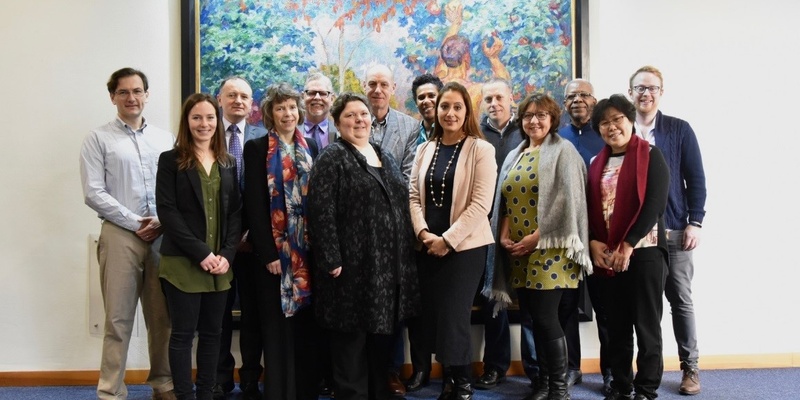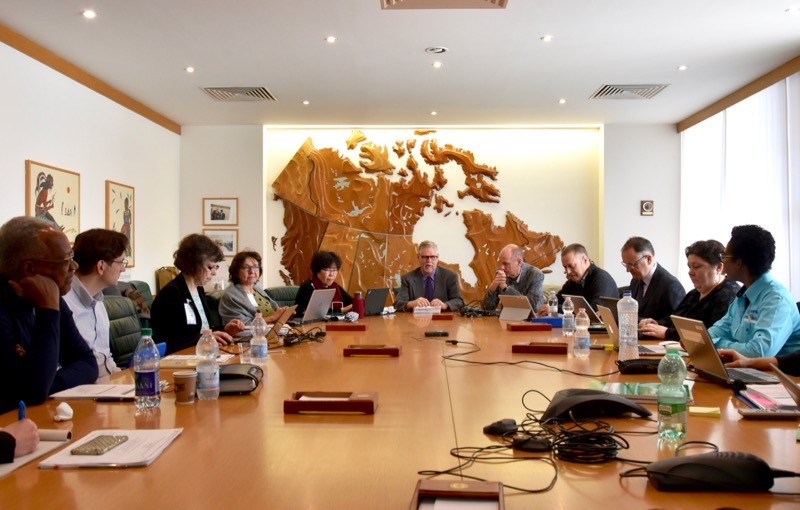The Annual Meeting of the IPPC Technical Panel on Diagnostic Protocols TPDP) Held at FAO
Posted on ven, 24 Fév 2017, 10:35

The International Plant Protection Convention (IPPC) Technical Panel on Diagnostic Protocols (TPDP) met from 13 to 17 February 2017 at FAO-HQ in Rome, Italy. The main objective of the meeting was to revise draft DPs, review their work programme and discuss several horizontal issues related to DPs. The meeting was chaired by Juliet Goldsmith (CAHFSA), and attended by seven TPDP members (Canada, China, France, the Netherlands, New Zealand, the United States of America and Caribbean Agricultural Health and Food Safety Agency (CAHFSA)), the TPDP Steward (Jane Chard, United Kingdom), as well as one invited expert (Françoise Petter, European and Mediterranean Plant Protection Organization) and representatives from the IPPC Secretariat.
The TPDP members started off the meeting with enthusiasm as five new diagnostic protocols (DPs) had just been adopted in January this year (see more info); an important step towards completing the DPs on the current work programme, which comprises 13 draft DPs.
The TPDP reviewed their work programme and discussed in-depth the following four draft DPs: 1) Revision of DP 2: Plum pox virus (2016-007); 2) Bactrocera dorsalis complex (2006-026); 3) Conotrachelus nenuphar (2013-002); and 4) Ips spp. (2006-020).
The TPDP considered possible gaps for international DPs for several plant pests, and concluded that there would be a need to develop several new DPs, which they recommended to the Standards Committee. In this context, the IPPC Secretariat recalled that FAO has global programmes for some of pests, for example for South American leaf blight, and for wheat stem rust and that FAO, as part of the Borlaug Global Rust Initiative - an international coalition, coordinates surveillance and monitoring efforts to mitigate the threat of cereal rust diseases.
The TPDP also discussed several horizontal issues related to DPs such as quality assurance, best practices for sequencing, controls options for ELISA tests and molecular tests and the next generation sequencing (NGS) technologies. Regarding the NGS technologies, the TPDP noted that these technologies allow sequencing of the whole genome and can be used for all types of organisms. However, policies for interpreting data resulting from NGS technologies to enable appropriate regulatory decisions are lacking globally. Additionally, the TPDP agreed that some fundamental questions relating to the biology of the latent organisms identified through NGS technologies would need additional studies for NGS technology to inform pest risk analysis and other science-based policy decisions. For example, some commodities could be restricted in their international movement due to perceived presence of an organism that may not actually be pathogenic to its host. So, although the NGS technology has great potential its use as a tool for pest diagnostics is still at an early stage. The TPDP is developing guidance for IPPC DP authors on criteria for inclusion of NGS methods in DPs, and developed some recommendations to the Standards Committee (SC) on this subject.
The purpose of harmonized DPs is to support efficient phytosanitary measures in a wide range of circumstances and to enhance the mutual recognition of diagnostic results by NPPOs, which may also facilitate trade. Furthermore, these protocols aid the development of expertise and technical cooperation on a global scale. The meeting report will be available shortly at the following link: https://www.ippc.int/en/core-activities/standards-setting/expert-drafting-groups/technical-panels/technical-panel-diagnostic-protocols/.



